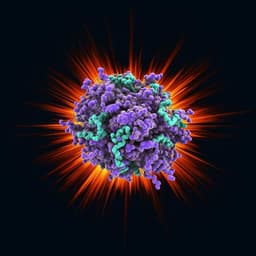
Chemistry
Observation of site-selective chemical bond changes via ultrafast chemical shifts
A. Al-haddad, S. Oberli, et al.
This groundbreaking research showcases the capability to initiate and observe ultrafast electron rearrangement in carbon monoxide molecules, specifically at the oxygen atom. By examining the chemical shifts of carbon core-electron binding energy, this study unveils sensitivity to chemical environment changes and transient electronic dynamics, paving the way for insights into energy and charge transport processes in complex systems. Conducted by an expert team of authors, this work is poised to revolutionize our understanding of chemical reaction processes.
Playback language: English
Related Publications
Explore these studies to deepen your understanding of the subject.







